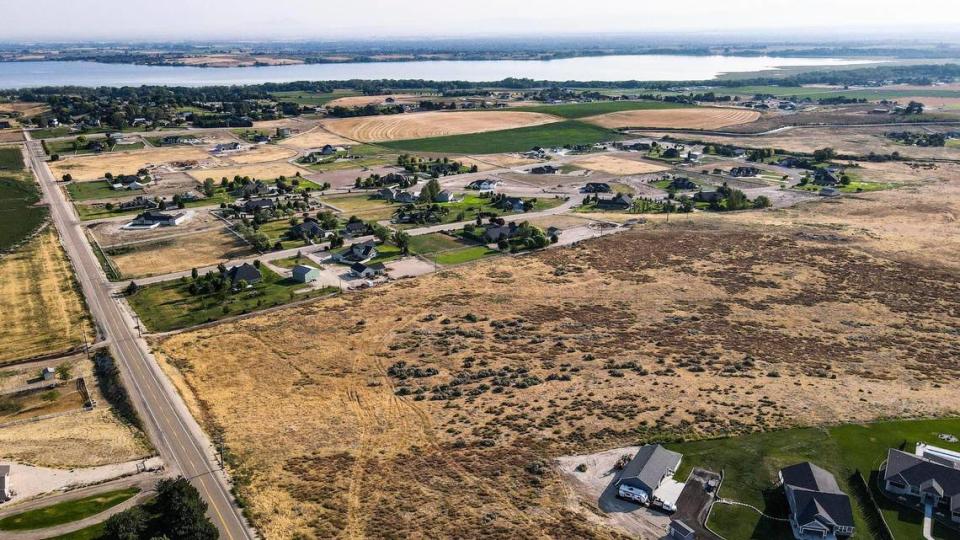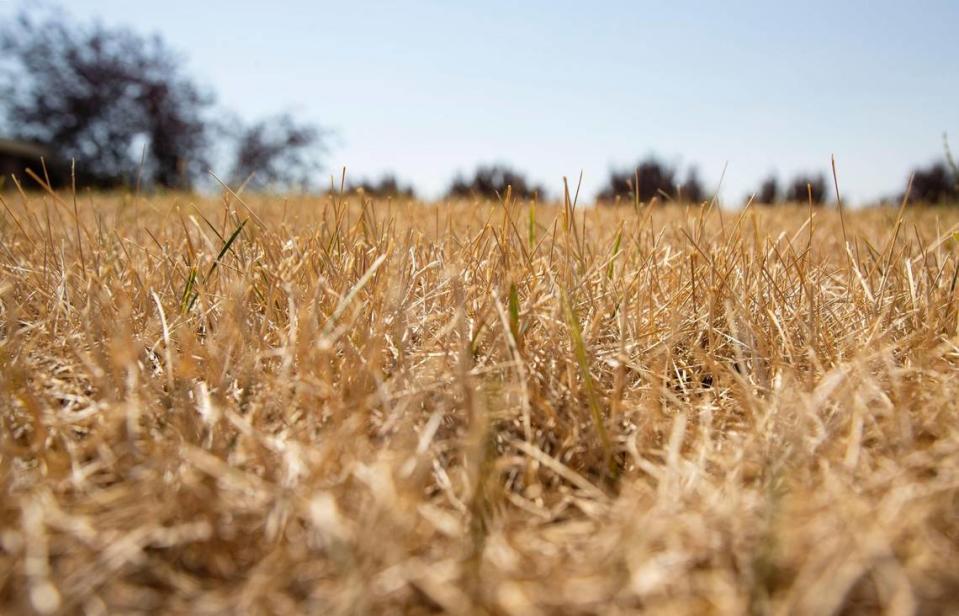Neighbors worried a new subdivision would hurt their wells. Then this woman stepped in
Claudia Haynes’ well went dry in July.
She and her husband stopped watering any landscaping. Gradually, the well has filled up just enough for them to meet their essential needs.
“The aquifer has filled up enough so we can brush teeth, flush the toilet, make dinner and take a shower, but sparingly,” Haynes told the Idaho Statesman by phone. “We take a 3 minute shower. I am not washing clothes. I am not running the dishwasher. Even in doing that, two or three other neighbors have lost their water.”
About six months earlier, when Haynes’ well still produced water, a Meridian home builder proposed to build 47 houses on vacant farmland a mile south of her home. Haynes grew alarmed. What would the subdivision do to the aquifer she and her neighbors depended on?
A group of residents from Haynes’ subdivision and other nearby subdivisions approached Haynes with similar concerns. They wanted her help. Haynes is one of the directors for the Canyon County Alliance for Responsible Growth, a nonprofit that advocates for responsible growth in the county.
Haynes said she would be happy to help.
Neighbors say growth is to blame for dry wells
Twenty years ago, Haynes and her husband moved to a home in the Deer Sky Ranch subdivision located south of Lake Lowell in Nampa. The couple has lived there for 20 years with an over 400-foot-deep well.
The Haynes are not the only residents in the area experiencing water issues.
In an Feb. 24 email to the commission, Deborah and Walter Kane said that after 16 years of living on Lakecrest Drive, south of the proposed development, they have had to replace and lower their well pump three times. They said it cost them close to $9,000.
In another email dated February 24, Don and Sue Salyer wrote their well went dry in 2013 and they had to get a new one drilled for nearly $18,000.
On April 15, the Canyon County Planning and Zoning Commission heard a proposal from Casey Ames, a developer with Taylor Jene Homes, for 47 homes on 122 acres east of Sky Ranch Road, near the intersection of Deer Flat Road and Sky Ranch Road.

In a letter included in the Taylor Jene Homes application Ames said the homes would be one- and two-stories on 2- to 6-acre lots, “creating space for privacy while maintaining that country feeling we all so much appreciate and cherish.”
That was while the Boise area’s dry spring was still unfolding. Before this summer of climate change ushered in the hottest July on record. Before homeowners across the Treasure Valley stepped up lawn watering to save their grass.
Seven neighbors of the proposed subdivision testified against it at the public hearing, all saying they had concerns that their well water was already declining.
Despite the opposition, the commission recommended that the Board of Canyon County Commissioners approve it.
State agency data leaves more questions than answers
The commissioners took up the project on June 28.
Taylor Jene Homes and the neighbors had conflicting accounts of the well issues. The commissioners decided that they needed additional information about water levels in the area. They continued the hearing until July 26.
Meanwhile, temperatures rose into the 100s, and domestic water usage soared as lawns baked in the sun. Haynes’ well stopped producing water, though she said she didn’t think either her household or her neighbors have watered more than usual this year. The dry wells just reinforced the point she and other neighbors wanted commissioners to get.
“The neighbor next to us, the one across and two houses down, they ran out of water,” Haynes said. “It is obvious to us that there is a water problem here.“

Nick Miller, an engineer with the Idaho Department of Water Resources, answered commissioners’ questions at the July 26 hearing about wells and water levels in area. Miller said the department has multiple monitoring wells in the area. He said they indicate that the water levels have been steady and even rose from 2005 to 2020.
He added that residents may be experiencing a shortage because of overuse, something called a “cone of depression,” an inverted cone that forms around a well where water is being withdrawn, reflecting a lower water level than in other parts of the aquifer.
Miller also said the geology of the area may be making it difficult to tap into the underground water source. He said the wells themselves may have been poorly designed. Miller said construction methods vary on different wells, with some being drilled without the correct screening to keep sand from falling into the wells.
The neighbors disagreed. Why, they asked, if well construction is the issue, were so many neighbors complaining about dry wells?
After the July 26 meeting, the developer decreased the number of homes to 35, hoping that would ease neighbors’ concerns. It didn’t.
In a final meeting Monday, the commissioners sided with neighbors. Two of the three commissioners decided they could not approve the subdivision because there were too many unanswered questions about the aquifer and dry wells.

Commissioner Pam White said she would like to see an updated study of the water levels and aquifer in the area.
Commissioner Leslie Van Beek agreed: “The issue is not the subdivision; it is a water issue.”
Commissioner Keri Smith said she had a difficult time siding with the rest of the board to deny the application. She said Taylor Jene Homes’ plan complied with the zoning proposed in the county’s comprehensive land-use plan.
“I think we could have conditioned this,” Smith said. “We have a need for a high-end opportunity for residents to live in — this would have provided that. I do want safe water opportunities for the people who live there and (for) the future residents.”
But Smith eventually voted alongside her fellow commissioners.
“Will the well come back? We don’t know.”
Haynes and her neighbors won the battle, but they are still low on water. She said she is waiting on the Division of Water Resources’ to tell her what to do about her dry well.
She believes the division has not been reporting accurate data about the state of the aquifer in the area, and she says the agency is not providing guidance to neighbors about what to do about their wells.
Haynes said she put in all of her landscaping herself, “one tree at a time, one bush at a time, one seed at a time.”

Now, she laments: “It is all going to die.”

